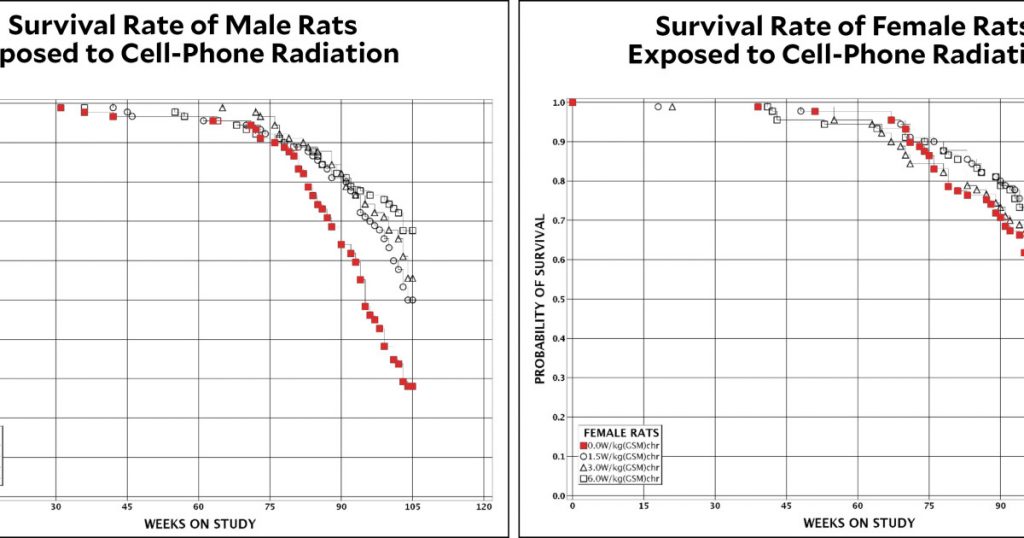Does Cell-Phone Radiation Help You Live Longer?
Looking for news you can trust?Subscribe to our free newsletters.
A few days ago the Nation ran a cover story titled “How Big Wireless Made Us Think That Cell Phones Are Safe.” The authors say that their article “does not argue that cell phones and other wireless technologies are necessarily dangerous; that is a matter for scientists to decide.” Rather, it’s focused on the long campaign from the cell-phone industry to downplay and cover up studies that suggested any danger.
I finally got around to reading the article this evening, and toward the end it mentioned that we were still waiting for the final report of the National Toxicology Program, a rigorous study of cancer in rats exposed to cell-phone radiation. That got me curious, so I found the final draft report, released a few weeks ago, and read through it. The study found that a very small number of male rats exposed to radiation developed malignant gliomas, though oddly, there was no dose-response effect: rats exposed to low levels of radiation developed gliomas at the same rate as those exposed to high levels. In any case, the overall effect was not statistically significant. Female rats showed no ill effects at all. The same was true for schwannoma tumors (which are often benign): male rats showed a small increase while female rats didn’t.
The report concluded that there was “some evidence” of carcinogenic activity based on the increased number of schwannomas, though it was fairly low and restricted to males. However, there was also this:
In males, survival was greater in all exposed groups compared to sham controls, though it was statistically significant only in the 1.5 and 3 W/kg groups. Survival in the sham control group was 28% compared to 48%, 62%, and 48% in the 1.5, 3, and 6 W/kg groups, respectively.
Wait. The male rats exposed to radiation lived longer? Yep. Here’s Figure 8:
By the 105th week, males exposed to the highest levels of radiation had a survival rate of about 70 percent. Those exposed to no radiation (the red dots) had a survival rate of 30 percent. Among female rats, survival rates were similar for all groups. (The chart above is for GSM phones, but the results were pretty much the same for CDMA phones.)
The authors attribute the lower survival rate of the control group to “higher severity of chronic progressive nephropathy in the kidney,” a common disease in the strain of rats used in the test. But there’s more: not only did the exposed rats have a lower severity of nephropathy, but the higher the exposure the less the nephropathy. In the discussion section, the authors say this suggests “that the decrease in chronic progressive nephropathy may have been related to cell phone RFR exposure,” possibly via “suppression of inflammatory processes through stimulation of stress response pathways.”
I’m not sure what we should make of this. The peer review of the report was held last week, and the review panels voted to accept the conclusions of the study. However, there doesn’t seem to have been any discussion of the higher survival rates of male rats exposed to radiation. How peculiar.





